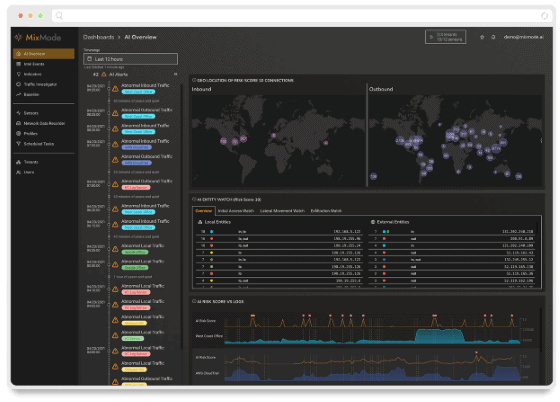Geoffrey is a cybersecurity business executive and leader with over 25 years of experience and a proven track record in sales and solutions across a wide variety of information security technologies, risk management, and regulatory compliance solutions. Geoffrey currently runs Strategic Alliances at MixMode and before coming to MixMode he ran large solutions teams at Splunk, Palo Alto Networks, and SAP.
While security information and event management (SIEM) vendors continue to insist their technology is sufficient to meet the dynamic challenges and exceptionally complex threatscape faced by cybersecurity teams today, their behavior in the marketplace and overall performance tells a different story.
If these platforms are as robust as vendors claim, it’s puzzling why their approach is to continually tack on “features” that enable SIEM to perform somewhat adequately as effective security tools. If SIEM is effective, why do vendors recommend upgrading to network analysis or threat detection tools?
How can a SIEM offer real-time threat detection or predictive analysis, like some vendors claim, when these platforms rely on historic data logs that are outdated as soon as they are fed into the system?
In truth, these systems are inadequate in their simple form and even when enhanced by add-ons. The answer to the issue of ineffective security solutions is not simply to increase cybersecurity spending. Surprisingly, the best solution for many organizations could be a lower overall cybersecurity investment.
The fundamental SIEM flaws lie in the platform’s need for continual adjustment, endless data stores, and a tendency to create an overwhelming number of false positives. When organizations instead turn to a next-generation cybersecurity solution, which predicts behavior with an unsupervised (zero tuning) system, they are poised to save on both financial and human resources.

In our newest whitepaper, “The Failed Promises of SIEM: How Next-Generation Cybersecurity Platforms are Solving the Problems Created by Outdated Tools,” we discuss how SIEMs were originally a log retention platform, designed for data compliance. While useful for the search and investigation of historical log data, they fail at real-time data analysis and predictive threat detection.
Furthermore the whitepaper examines how:
- Vendors capitalize on SIEM’s fundamental flaws
- Current gaps in your “next-generation” SOC
- MixMode compares to a legacy SIEM and the management of false positives
- The arrival of third-wave, self-supervised AI is created outside the limitations of the legacy architectures that are holding back many of today’s security vendors
Click here to download your copy of, “The Failed Promises of SIEM.”
MixMode Articles You Might Like:
How Data Normalization in Cybersecurity Impacts Regulatory Compliance
Webinar: The Failed Promises of SIEM – What’s Next For Cybersecurity
3 Reasons Why a Rule-Based Cybersecurity Platform Will Always Fail
Why Data Overload Happens and Why It Is a Problem for Cybersecurity Teams
Why SIEM Has Failed the Cybersecurity Industry
Data Overload Problem: Data Normalization Strategies Are Expensive
What is Predictive AI and How is it Being Used in Cybersecurity?


